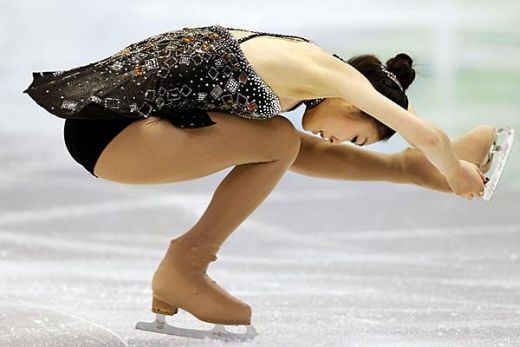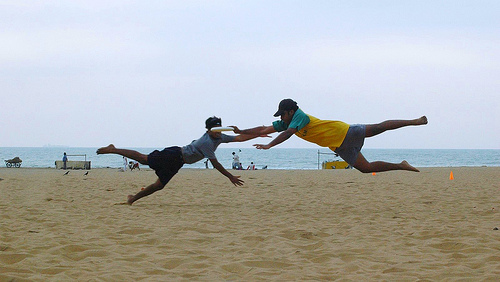Dancing on Ice
The Winter Olympic Games were held at Sochi, Russia, from February 7th to Februrary 23rd this year. Two thousand eight hundred and seventy one athletes from eighty eight nations took part in ninety eight events. Rife with controversy, there were several spirited protests about dubious practices leading to cost overruns and the aftermath of the Russian LGBT propaganda law, and the safety of athletes and audience identifying as LGBT during the games, terrorist threats and allegations of partial judging. National leaders declined to attend the games as part of their nation’s delegation. In particular, the United States pointedly appointed Billie Jean King and Caitlin Cahow (both openly gay) to represent the country, even as President Barack Obama stated that they wanted to make it very clear that they do not abide by discrimination of any kind. Circassian (an ethnic group exiled from Russia; nowadays predominantly living in Turkey) organizations objected to the location of the games on land that was theirs until the end of the Russian-Circassian war, in which their numbers were severely decimated. And yet, amidst all this contention, the games were most definitely captivating and in the true spirit of sportsmanship.
One of the most anticipated events was figure skating, held at the Iceberg Skating Palace, and consisting of five events that spanned seventeen days, from February 6th to February 22nd. The four events recognized at the Olympics are singles (individual men/women), pairs (a man and a woman performing together, in synchronization), ice dancing (a man and a woman perform a dance in time to music) and teams (teams of the people perform in the categories stated above together), further segregated by gender.
Figure skating blades are about 5 mm thick and made of tempered carbon steel with a layer of chrome on top, although stainless steel and aluminum blades are also common. The blades have two edges, the inside and the outside, divided by a groove running along the blade. Skating on one edge of the blade is looked upon favorably, and the friction generated between the blade and the ice creates a film of water that aids in movement, which freezes once again, immediately after the blades pass.
A panel of judges grade participants based on their performance of certain maneuvers, called elements, from -3 to +3, and arrive at a final score after taking into consideration the difficulty of the maneuver in question, in addition to balance, form and grace.
The main elements are jumps, spins, lifts, turns, and figures. Jumps involve rotating in the air after launching off the ice, clockwise or counter-clockwise, and often for multiple rotations. Depending on the part of the blade used and the manner of use during the launch, they are further classified into toe loops, flips, lutzes, half toe jumps (all of which use the toe) and salchows, loops, axels (all of which use the edge). Spins are dizzying rotations in multifarious positions, although the three main spins are the camel spin, the sit spin and the upright spin, although variations upon these are common, and lauded. As with jumps, spins can be either clockwise or counter-clockwise, and proficient skaters can make about six rotations per second and about seventy rotations at a stretch (as one spin). During paired skating, the pair often spin in synchrony, or about the same axis. Lifts are utilized in the paired events and are frequently overhead. Classified based on the different types of holds, lifts are paired with spins, jumps and speed skating. The more elaborate the maneuver, the more points it scores. Music almost always accompanies the skaters and is mandated to be instrumental. Although practicality in attire is logical, skaters sometimes indulge in thematic affairs that match their routine and the music.
The Winter Olympics this year saw the establishment of many new records, most notably by Yuzuru Hanyu,
from Japan, who won the gold medal in the men’s singles event. Nineteen-year-old Hanyu (who had stated confidently, as a child, that he intended to win the gold medal at the Olympic event after the one at Vancouver – and proceeded to do just that) skated a glorious dance to Romeo and Juliet and Parisienne Walkways, gliding over the ice in a series of tight twirls, soaring jumps and spectacular contortions. Flaunting his fabulous flexibility and scorching agility, Hanyu soared to Japan’s first gold medal (and second Olympic medal in skating), heralding Asia’s arrival on the skating scene.
The woman’s singles went to Russia’s Adelina Sotnikova, with Kim Yuna coming in second. There has been much contention regarding the judges’ decision, with Yuna’s performance being commended for greater aesthetic appeal and minimal mistakes, whereas Sotnikova’s more aggressive approach saw a couple of glaring errors. Despite the inquiry filed by the South Korean Olympic Committee, the judges’ decision stands. Both women executed sublime performances as the embodiments of grace and finesse.
With such sheer beauty being associated with the sport, it is no wonder that figure and speed skating are rapidly gaining popularity. Not a small factor in this development is the blatant wonder the difficult dance instills in spectators. More than halfway to being a show rather than a sport (unlike its bellicose cousin, ice hockey), ice skating is, nevertheless, extremely riveting, and all the more so for its seemingly unattainable status – something that can only the extremely gifted can excel in.




